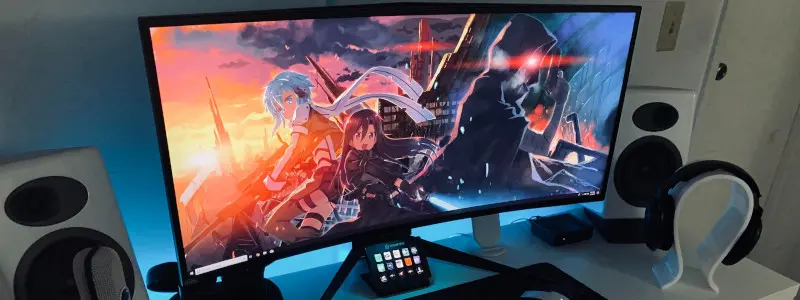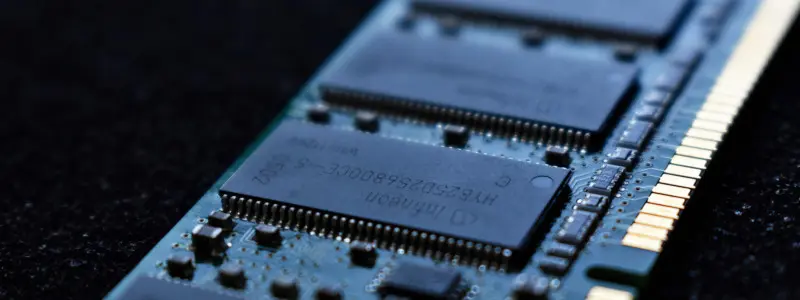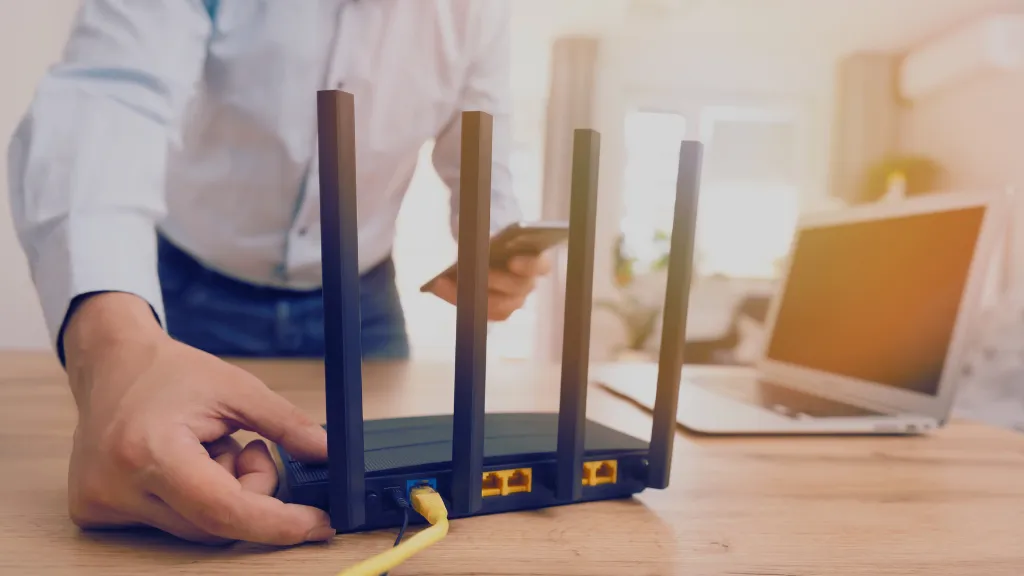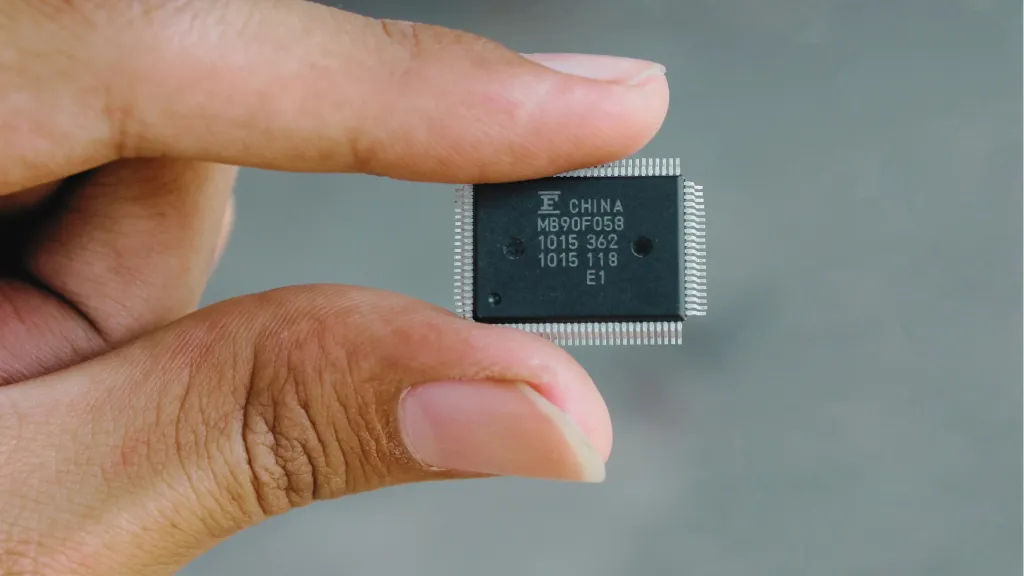Sometimes RAM and VRAM are interchangeable, but they are not the same. If you’re looking for a new computer, it is important to look at both specifications and know what each is about your purchase.
They are often conflated in consumers’ minds when choosing a new computer. These two components are so integrated into our day-to-day lives that one almost doesn’t notice they are different until it comes time to buy and operate a new machine.
RAM is commonly found in laptops, mobile devices, and servers, while VRAM is more prevalent in high-end desktop systems.
While there is a general correlation between the two, it is essential to understand their differences when buying a PC or laptop. If you want to know why one is more important or which one you should pay attention to, here’s the answer.
What is RAM?
RAM is an acronym for random-access memory, a computer memory that computers use to perform tasks.
Random-access memory is like the working space in your brain. There are millions of things stored in RAM at any given time, and it allows you to pull up whatever information you need almost instantaneously.
Random-access memory (RAM) stores data temporarily while applications run on your computer. Without RAM, doing just about anything on your PC would be much slower.
RAM is not just a storage device but also a mechanism for data transfer between the processor and memory. In computer systems with ultra-low power or embedded systems, an internal memory known as Random Access Memory (RAM) is a critical system component.
In electronic devices, RAM is typically found in laptops, desktop computers, servers, smartphones, tablets, and embedded systems used in digital entertainment centers.
One of the great things about modern computers is how easy it is to upgrade almost any component. RAM has long been one of those components that you could upgrade and reap noticeable performance gains.
Types of RAM
- DRAM (Dynamic Random-Access Memory): DRAM is the most common type of RAM found in computers and other electronic devices. It’s like the short-term memory of a computer. DRAM stores data in tiny capacitors within each memory cell, which must be constantly refreshed to maintain the data. It is a cost-effective solution for storing large amounts of data, but it is relatively slower than other types of RAM.
- SRAM (Static Random-Access Memory): SRAM is another type of RAM, like a computer’s fast but smaller cache memory. Unlike DRAM, SRAM doesn’t require constant refreshing, which makes it faster and more reliable. SRAM stores data in flip-flops, circuits that can hold their state as long as power is supplied. It is often used as cache memory or in applications that require high-speed access, such as processors and high-performance computing systems.
What is VRAM?

Video Random Access Memory, also known as VRAM, is a memory that resides on a video graphics board to maintain visual data between frames. VRAM is the primary storage site for graphics-related information, while the CPU deals with non-graphics-related tasks.
VRAM is a specialized form of RAM that is used to directly store the elements (pixels, lines, etc.) of video data.
Because different types of data do not access memory at the same rate, VRAM buffers and formats graphics data structures so they can be immediately accessed by a computer’s central processing unit (CPU) or the graphics processing unit (GPU).
VRAM is the memory in a display adapter devoted to storing image data for display. Typically, the amount of VRAM on a video card is the biggest determinant of video performance. The more VRAM, the better the resolution and color depth possible for that card.
It is used in both 2D and 3D computer graphics as part of the graphics hardware acceleration used to hold the image data displayed on a display screen and create and manipulate that image.
The amount of VRAM on any given video card is usually measured in megabytes per second. It ensures the processor can quickly access large amounts of image data when drawing to the screen.
VRAM vs RAM Comparison Table
| VRAM | RAM | |
|---|---|---|
| Function | Specialized memory for graphics-related data storage | General-purpose memory for overall system tasks |
| Usage | Primarily used by the graphics processing unit (GPU) | Used by the entire computer system |
| Access Speed | Slower access speed compared to RAM | Faster access speed compared to VRAM |
| Data Storage | Stores graphics-related information such as textures and 3D models | Stores data temporarily for running applications |
| Upgradeability | Generally limited to the specifications of the graphics card | It can be upgraded to increase overall system performance. |
| Availability | More prevalent in high-end desktop systems | Found in laptops, mobile devices, servers, and desktop systems |
| Importance for Gaming | Crucial for rendering high-quality graphics and textures | Important for overall system performance and multitasking |
| Impact on Performance | It affects graphics rendering speed and quality. | It affects overall system speed and responsiveness. |
| Typical Capacity | Ranges from 2GB to 16GB (varies by graphics card) | Ranges from 4GB to 64GB (varies by system configuration) |
Types of VRAM
- GDDR6: This type of VRAM, Graphics Double Data Rate 6, is the latest and fastest variant available. It offers high bandwidth and improved performance, making it suitable for demanding graphics tasks such as gaming and video editing. With faster data transfer rates, GDDR6 VRAM allows for smoother gameplay and enhanced visual effects.
- GDDR5: Graphics Double Data Rate 5, or GDDR5, is the predecessor to GDDR6. It is still widely used in many graphics cards today. GDDR5 VRAM performs well for gaming and multimedia applications, balancing speed and affordability. It has lower bandwidth compared to GDDR6 but is still capable of delivering excellent graphics performance.
- GDDR5X: This is a variant of GDDR5 that offers higher memory speeds and improved performance. GDDR5X VRAM is found in some high-end graphics cards and provides a noticeable boost in data transfer rates compared to regular GDDR5. It delivers faster loading times for textures and improves overall gaming performance.
- HBM (High-Bandwidth Memory): HBM is a newer type of VRAM that uses a stacked memory design. It offers increased memory bandwidth and lower power consumption. HBM VRAM is commonly found in high-end graphics cards and performs graphics-intensive tasks excellently. Its stacked architecture allows for more memory capacity in a smaller physical footprint.
- HBM2 (High Bandwidth Memory 2): HBM2 is an improved version of HBM, offering even higher bandwidth and capacity. It features faster data transfer rates, enabling smoother gameplay and improved graphics rendering. HBM2 VRAM is commonly used in high-end graphics cards and professional applications that require superior performance and memory efficiency.
Differences Between VRAM and RAM
The difference between RAM and VRAM is that RAM is a computer’s physical memory and VRAM stores data for a graphics processor.
The main difference between VRAM and RAM is how the two types are accessed. RAM contains multiple pieces of information that can be accessed via a single charge, while VRAM needs a new charge for each byte-addressable unit of data stored. This means that VRAM takes longer to access than RAM.
When a processor does a computation, it stores the data on RAM. The faster and bigger the RAM is, the faster the processor can do computations.
When you run some 3D game or any software that needs graphics processing, your graphics card (with built-in memory) transfers some of its data to your main memory, your RAM. If you have more VRAM than regular RAM, then you can hold more data on graphics processing before they are moved to your main memory for further processing.
Which is Better RAM or VRAM?
If you’re wondering which is better, RAM or VRAM, the answer is RAM. That’s because graphics cards come with a high, solid amount of video memory called VRAM for short, and that memory is only meant for storing and instantly displaying things like textures and 3D models.
If a game loads all its assets from its disk, it’ll use the hard drive more often than if it loaded everything from fast system memory.
Even though the speed of your hardware greatly affects your computer’s performance, the RAM still plays an important role in the overall performance of your computer. This is because even though data are loaded into the system memory, the instructions for executing the program are stored inside the CPU.
Your system might run slow if your data and instructions (inside the CPU) are insufficient to do a specific job.
The more information you have to hold in RAM, the longer it takes to decide on what program to launch first. That’s why it’s always better to have more RAM when working with computers.
How to Increase VRAM?
If you want to check whether your Windows 10 requires more VRAM, follow these simple steps:
- Go to the Windows 10 search bar and type “Display Settings.”
- Click on “Advanced Display Settings.”
- Select “Display adapter properties for display.”
- The tab that pops up will display the current VRAM amount.
To enhance your VRAM capacity, the most straightforward approach is to upgrade your graphics card. For instance, switching from integrated graphics to a dedicated graphics card can significantly improve performance.
However, other methods exist to increase VRAM if upgrading isn’t an option. Some systems allow you to boost VRAM via the BIOS (basic input/output system).
Follow these steps to do so:
- Access “Settings” and then select “System.”
- Enter the “Advanced Features” or “Advanced Chipset Features” menu.
- Look for a menu option like “Graphics Settings,” “Video Settings,” or “VGA Share Memory Size.”
- In this menu, you should find various options to adjust the memory allocated to the GPU, ranging from 128 MB to 512 MB.
Remember that the Dedicated Video Memory value for integrated graphics is typically a placeholder value, allowing games to detect the available VRAM. While changing this Registry value won’t increase VRAM, it can give the appearance of having more VRAM.
To modify the value, follow these steps:
- Open the Registry Editor window by typing “regedit” into the Start Menu.
- Select the “HKEY_LOCAL_MACHINE” option.
- Navigate to “Software” and then right-click on “Intel.”
- Choose “New” and select “DWORD (32-bit) Value.“
- Assign a name to the new folder and set the minimum and maximum values to 0 and 512, respectively.
- After setting the value, reboot your computer to apply the changes.
Adjusting VRAM settings carries potential risks, so proceed cautiously and back up your system before making any changes.
Why Do Games Use RAM and VRAM?
To successfully run a 3D video game, you’ll need a rig with a graphics processing unit (GPU) and at least one gigabyte of VRAM. RAM is the system memory storage space allotted to run applications and other programs.
VRAM is used specifically for storing textures during the rendering process.
So basically, all the apps you have running will use RAM, so they need to be loaded into memory. Some games require a VRAM, such as 4GB for super graphic-intensive games.
History of RAM
RAM was invented 1967 by Robert Heath Dennard and was subsequently granted a patent for his one-transistor DRAM in 1968. The first commercial DRAM was available in the early 1970s and virtually on all computers by the mid-1970s.
History of VRAM
VRAM was originally developed in the 1980s at IBM’s Thomas J. Watson Research Center in Yorktown Heights, New York.
The original inventors were Frederick Dill, Daniel Ling, and Richard Matick. For their invention, they were granted a patent in 1985. They worked for IBM’s Research Division but had an inventor’s agreement with Johnson & Johnson subsidiary Life Savers, Inc.
Conclusion
While RAM and VRAM are both types of memory used in computers, they serve different purposes and have distinct characteristics. RAM, or random-access memory, is a computer’s physical memory that stores data temporarily while applications run. It acts as a working space that allows quick access to information, significantly enhancing the speed and performance of tasks.
On the other hand, VRAM, or video random-access memory, is a specialized form of RAM specifically dedicated to storing graphics-related data. It is primarily used by the graphics processing unit (GPU) to maintain visual data between frames and plays a crucial role in rendering images and videos.
When choosing a new computer, it is important to consider the specifications of both RAM and VRAM to ensure optimal performance for your intended usage. RAM is commonly found in laptops, mobile devices, and servers, while VRAM is more prevalent in high-end desktop systems.
While RAM is generally more important for overall system performance, VRAM is crucial for graphics-intensive tasks such as gaming or graphic design.
Frequently Asked Questions
Is 2GB VRAM Enough For Gaming?
2GB VRAM is enough for gaming in medium-high detail up to 1080p. It may be too early to assume that 4GB is a requirement.
VRAM matters for texture resolution and sub-pixel anti-aliasing. 2GB should be enough for the next 3-5 years for medium-high detail levels up to 1080p gaming.
Does More RAM Increase Graphics?
Graphics memory speeds and capacity are determined by the graphics card, not the amount of RAM you have. Adding more RAM will allow your computer to run programs faster and make it more responsive overall, but it won’t increase graphics memory.
Add more VRAM to your video card to improve your graphics memory.






